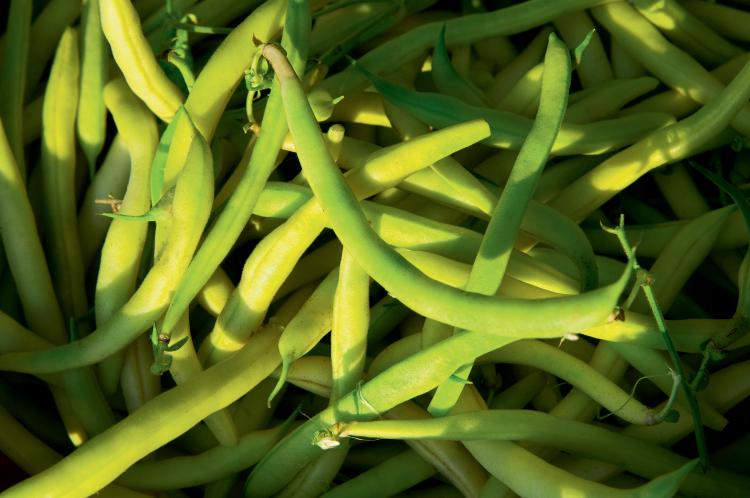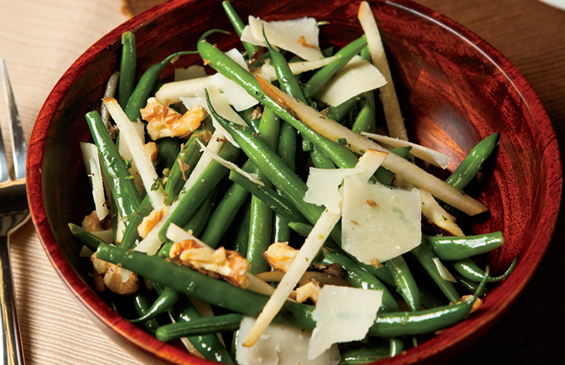Home > Lifestyle > Food For Thought > Go Green: Facts About Green Beans
Go Green: Facts About Green Beans

Beans, beans, they’re good for your heart. The more ‘ya eat, the more…nutrients you ingest!
Green beans have always been one of my favorite vegetables. I went through a phase in college where I subsisted predominantly off of canned green beans. Not something I would recommend, mind you, but it was cheap, filling and better for me than Easy Mac. These delicious beans reach their peak in May and are available through July.
Health Benefits
Fresh vegetables are always preferable to canned, but canned green beans preserve more vitamins and nutrients than you would think. Both variety include a range of benefits, such as:
-
Only about 31 calories per 100g.
-
A whopping 9 percent of daily recommended dietary fiber.
-
Good source of vitamins A, C and K.
-
Antioxidants which protect against free-radicals.
-
Zeaxanthin which helps promote eye health and protects against age-related macular degeneration.
-
Low in saturated fat and cholesterol.

Growing Green Beans
The deliciousness of fresh green beans could be at your fingertips in a few steps.
-
There are two types of green beans. Pole beans grow much like a climbing vine and require a stake or trellis. Bush beans spread up to two feet and do not require structural support.
-
It is best to plant from seeds, instead of transplanting.
-
Plant bush bean seeds 1 inch deep and 2 inches apart.
-
Pole bean seeds and trellis should be set up 3 inches apart.
-
Soil should be well-drained, but moistened by regular watering.
-
Green bean plants may need to be fertilized if nitrogen levels are low, but be cautious not to fertilize too much, as it will cause fewer beans.
Harvesting and Storing Green Beans
Green beans may be harvested when the beans within the pod are still not fully developed. Snap or cut the firm green beans off while trying to avoid tearing or damaging the plant. Fresh green beans may be stored in an airtight container in the refrigerator for about four days. Beans can also be blanched and frozen immediately after harvest for a longer shelf life. Pickling and canning are other popular options for storing green beans.
SEE MORE: What’s in Season: Arugula
Whether fresh, canned, sautéed, pickled or eaten raw, green beans are a fantastic way to get more green in your diet. Dig into these delicious green bean recipes.
Recipes:
French Green Bean Salad
Summer Succotash
Green Bean, Tomato and Vidalia Onion Salad
Bacon-Wrapped Green Bean Bundles
Sources:
Nutrition and You, The World’s Healthiest Foods, The Old Farmer’s Almanac



